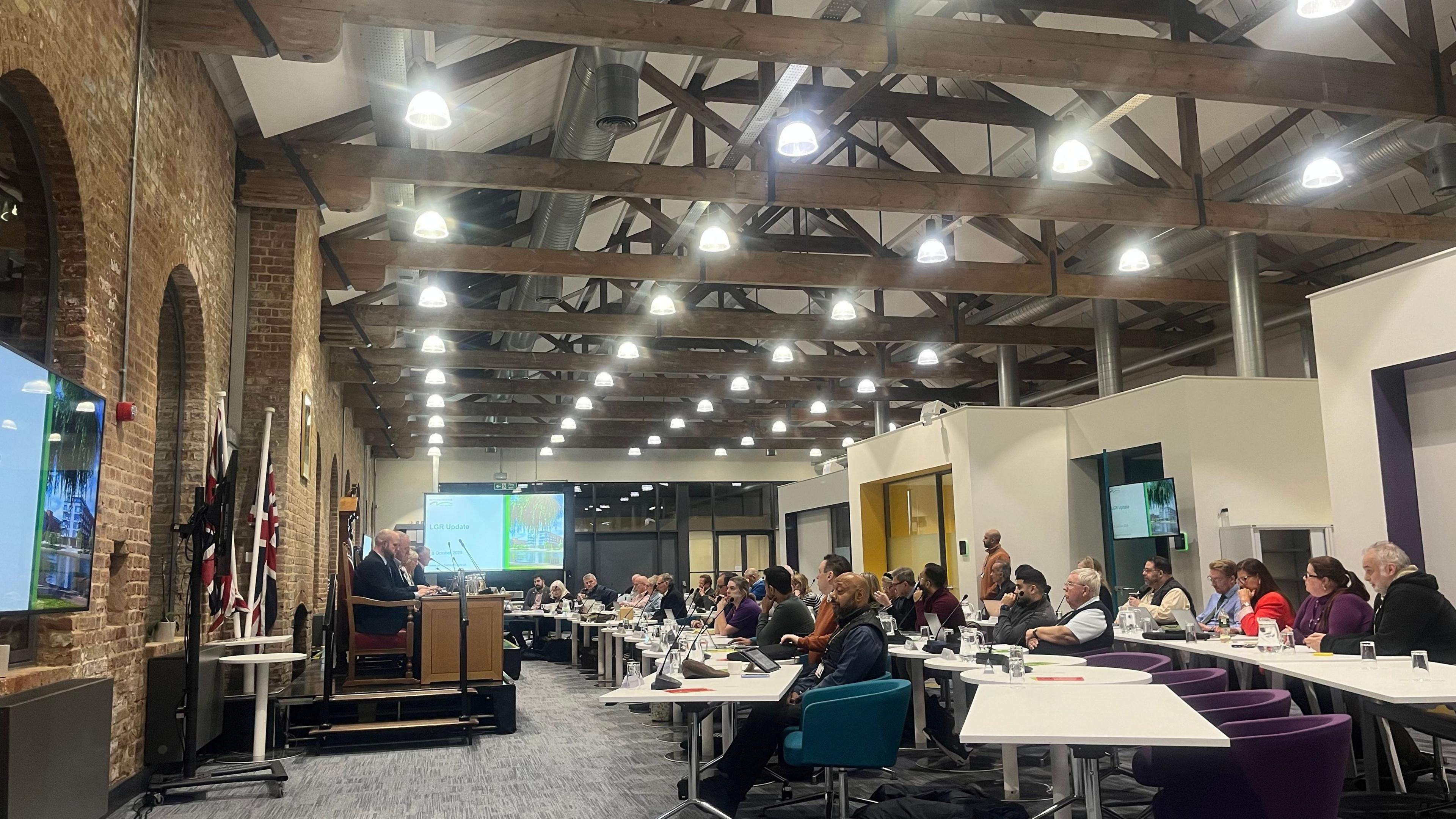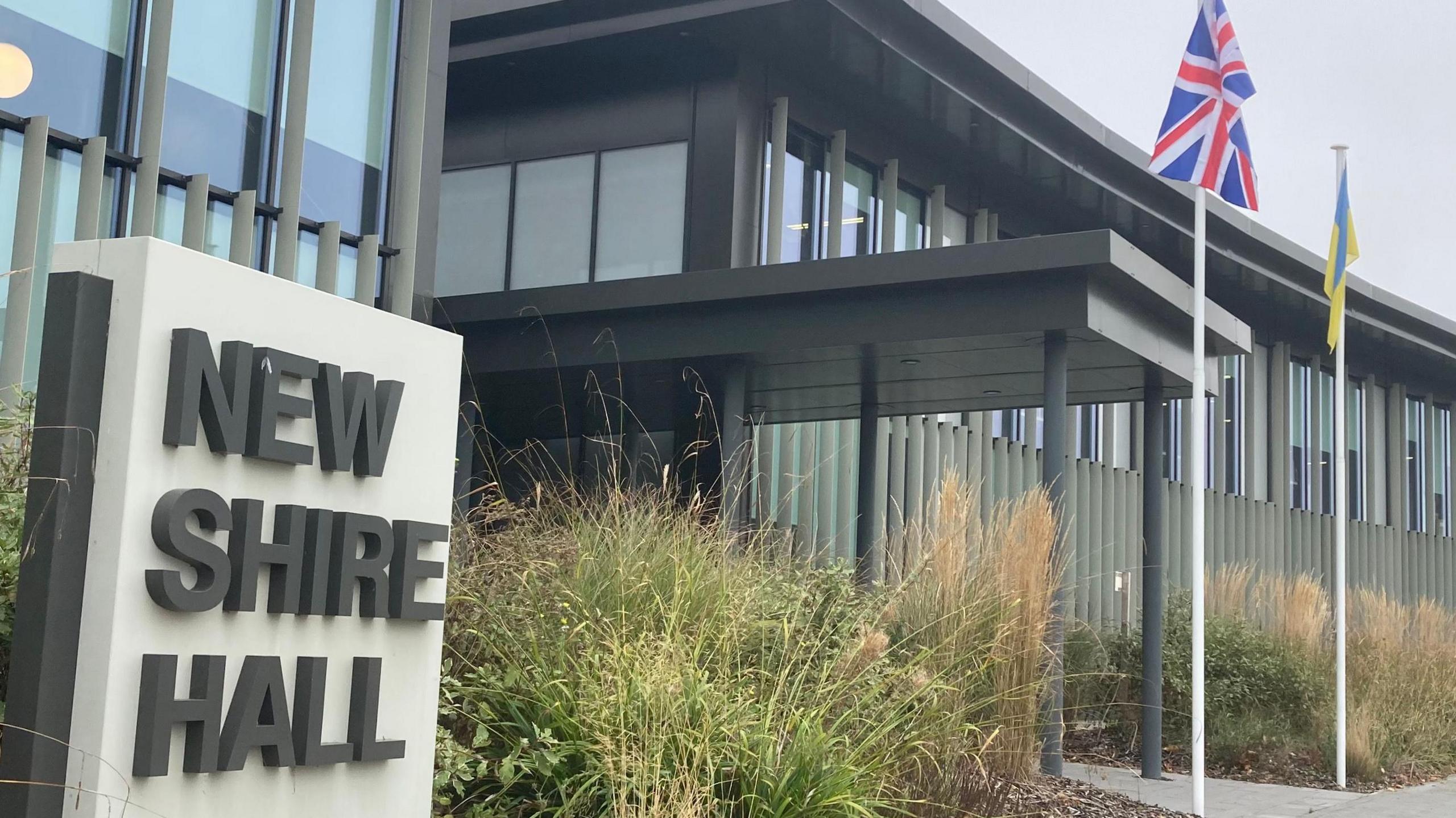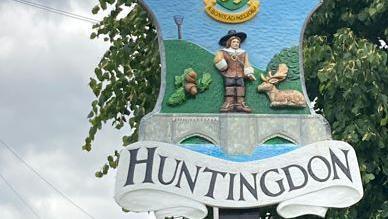Council tax may rise in local reform shake-up

From April 2028, the current seven councils in Cambridgeshire and Peterborough, including Peterborough City Council, will no longer exist and will be replaced by larger unitary councils
- Published
Residents faced a rise in council tax bills as part of a major overhaul of local government.
From April 2028, the current two-tier system of district and county councils in Cambridgeshire and Peterborough will be replaced by new unitary authorities under the government's Local Government Reorganisation programme, external.
It aimed to streamline services and devolve more powers and funding from Westminster to local areas.
At a joint scrutiny meeting on Tuesday, external, councillors heard that the reorganisation would lead to council tax harmonisation, meaning areas like Peterborough, with the lowest Band D council tax rate in the county, would likely see increased rates.
Two options were being considered for the new council structure:
Option A would create two unitary authorities: one covering Peterborough, Fenland and Huntingdonshire, and another covering East Cambridgeshire, South Cambridgeshire and Cambridge City.
Option D would form three authorities: Peterborough and West Huntingdonshire; Fenland, East Huntingdonshire and East Cambridgeshire; and South Cambridgeshire with Cambridge City.
Each new authority would have to sync up its bills within seven years.
What does it mean for my tax bill?
On day one of the new unitary councils, households would pay different amounts of council tax depending on which area they lived in.
If Option A is chosen, Peterborough's Band D council tax could rise by £216.
Under Option D, the current total of £1,749.42 could increase by about £31.52, or 1.77%, bringing the total to £1,780.94.
Meanwhile, residents in West Huntingdonshire could see their bills fall by £85.56.
Deputy chief finance officer Emma Riding told councillors that harmonisation should ideally happen as soon as possible.
"I know 1.77% is an increase, but it's not a significant increase," she said.
"It is about doing the right thing for sustainability in the future, and that's the way you're going to have to look at it when the time comes for making a decision."
Savings and costs
The financial implications of each model were also discussed.
Option A was projected to deliver £12.1m in annual savings with a payback period of six years.
Though it comes with one-off implementation costs of £34m and one-off transformation costs of between £11m and £16m.
Option D would generate £1.4m in annual savings with a payback period of 50 plus years.
It would come with one-off implementation costs of £41m and one-off transformation costs of between £7m and £12m
Positives and negatives
A report put to councillors said Option D was the "most locally responsive and identity-driven" but faced financial vulnerability.
On the other hand, Option A was "balanced in scale and financial efficiency" but may not fully address the distinct needs of deprived northern communities.
The Local Democracy Reporting Service said councillors also raised concerns about where the new headquarters would be located, with no decisions yet made on civic centres or service hubs.
All 60 Peterborough councillors will vote on the preferred option on 12 November, with cabinet members confirming the final decision on 18 November before it is submitted to the government on 28 November.
Get in touch
Do you have a story suggestion for Peterborough?
Follow Peterborough news on BBC Sounds, Facebook, external, Instagram, external and X, external.
Related topics
- Published22 October

- Published26 September
